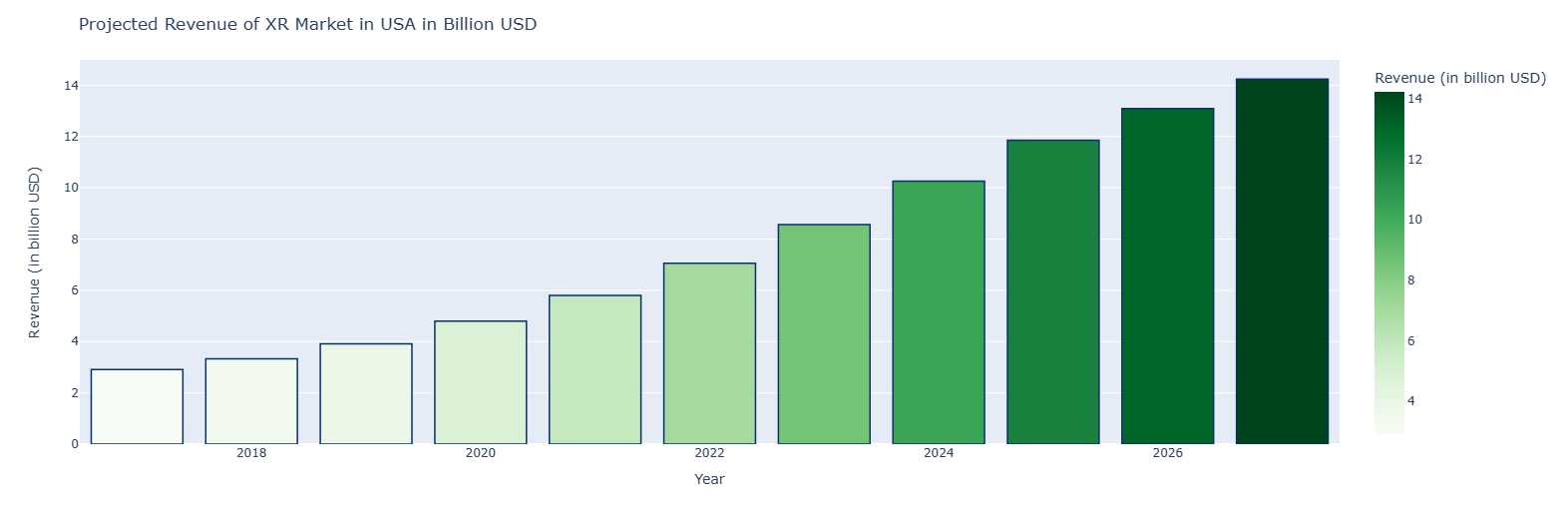Overview:
Is this third and final step, we pull from data set to support our ideas on what movie theaters can do to gain attraction once again. Through these visualizations, we emphasize the main reason why people enjoy coming to movie theaters: full immersion. By extending the reality of their physical world into the world of the movie, we believe consumers will feel that they are getting an incredible experience at the movie theater. Follow along below to see how extended reality benefits the movie theater industry.
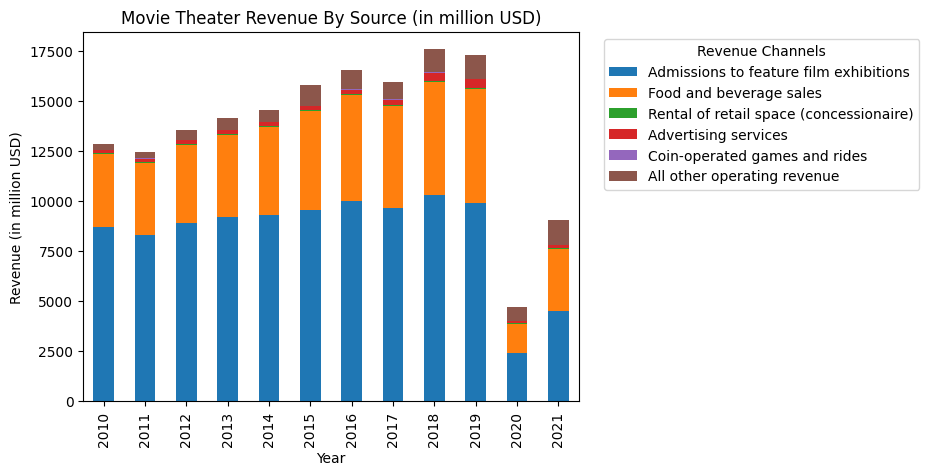
Revenue Sources
The bar graph above breaks down US movie theater revenue over time and by source. We see the most common sources being admission into theater and food/beverage. Distantly following is advertising revenue, followed by barely visable values for coin games/arcades and concessionare. The takeaway from this visualization is that there is room to grow in areas outside of the movie itself, but the traditional coin games/arcades are not the answer. However, while growing in other areas, it is important to keep in mind people's favorite parts of the theater experience: the movie and the food. Innovation can happen in other areas while not disrupting the classic features of the theater experience. Instead, innovation needs to enhance the experience, keeping in mind fully immersive experience that movie theaters strive to provide.
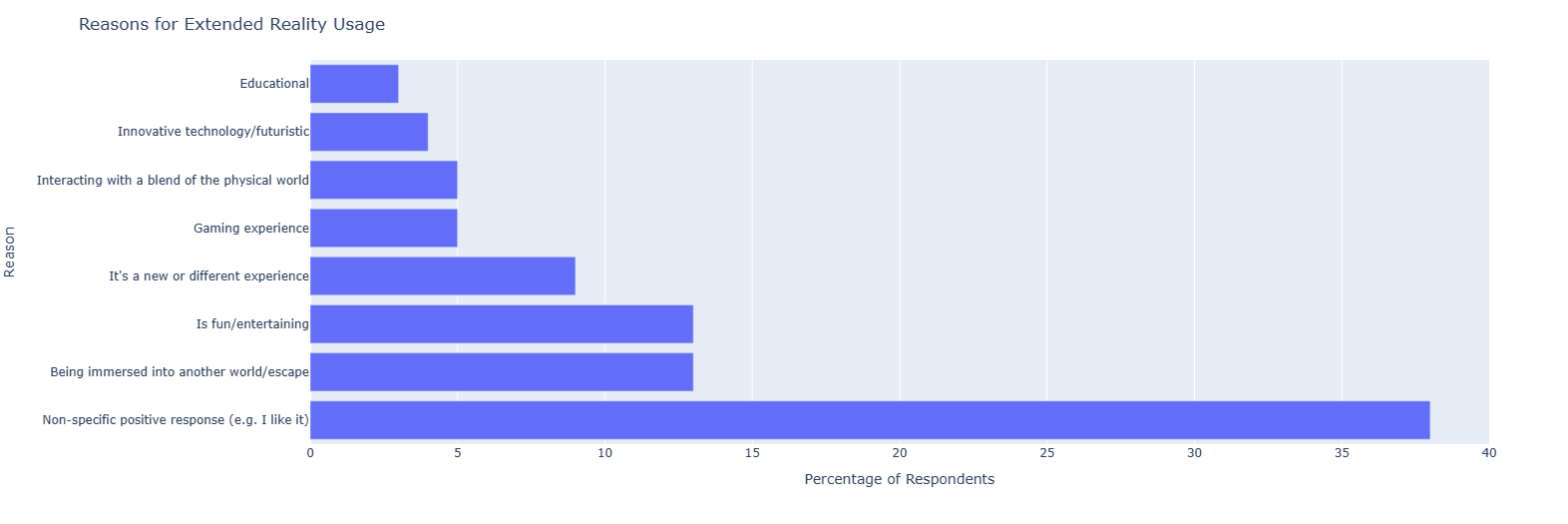
Reasons to Like Augmented Reality
The graph above shows survey respondents top reasons for extended reality usage. The top two reasons are "being immersed into another world/escape" and "is fun/entertaining". These reason line up perfectly with people's joy from going to the movies. Therefore, we believe that the movie theater should find ways to incorporate entended forms of reality (such as physical, augemnted, and virtual realities) into the movie theater experience to emphasize the fully immersive experiece of the big screen.
Food and Augmented Reality
In this video, the movie brand Fork n' Film takes extends viewers' physical realities with the sights of the movie. By surving food during the movie as it appears on the screen, viewers' physical realities overlap with their virtual realities, creating a fully immersive experience. It is this level of creativity than can make movie theaters reclaim their value over streaming movies at one as they create one-of-a-kind experiences.
Click here to watch the videoXR Market Growth
This graph visualizes the rapid growth projected for the extended reality market, worldwide in billion USD. The market reached $29.26 billion in 2022, making analyst feel optimistic about its future. They estimate that the market will grow to a value over $100 billion in 2026. This visualization helps to demonstrate the opportunity that the movie theater industry has in front of them to incorporate XR activities in place of the coin games/arcades that once were popular alongside
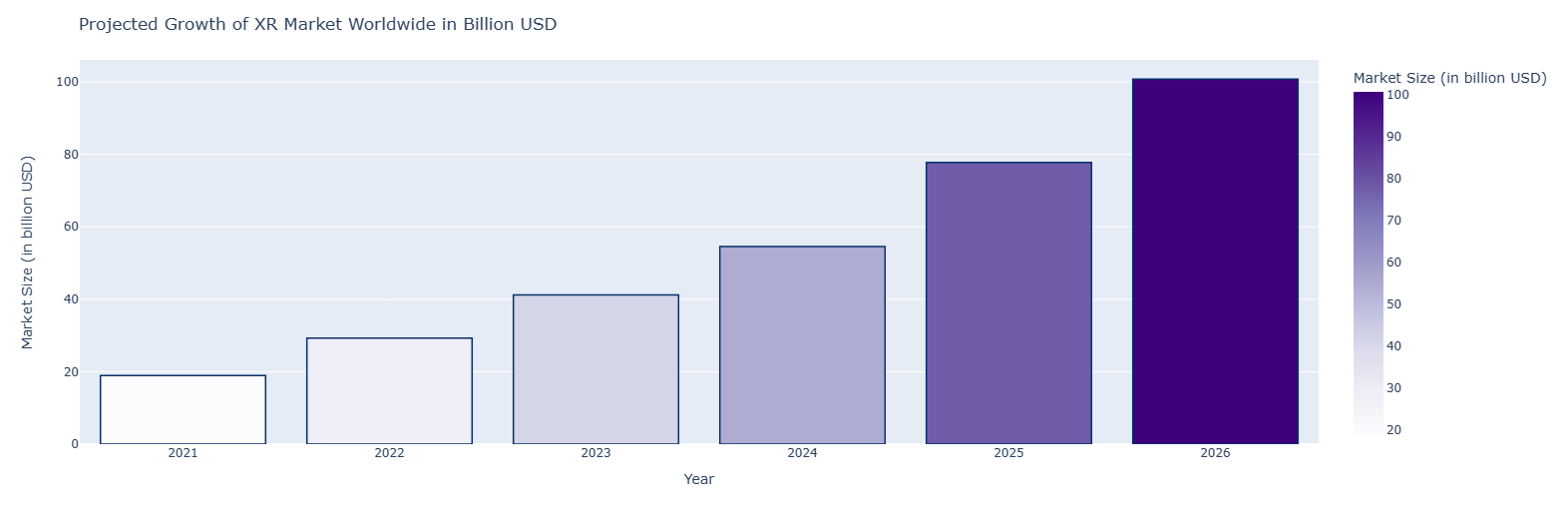
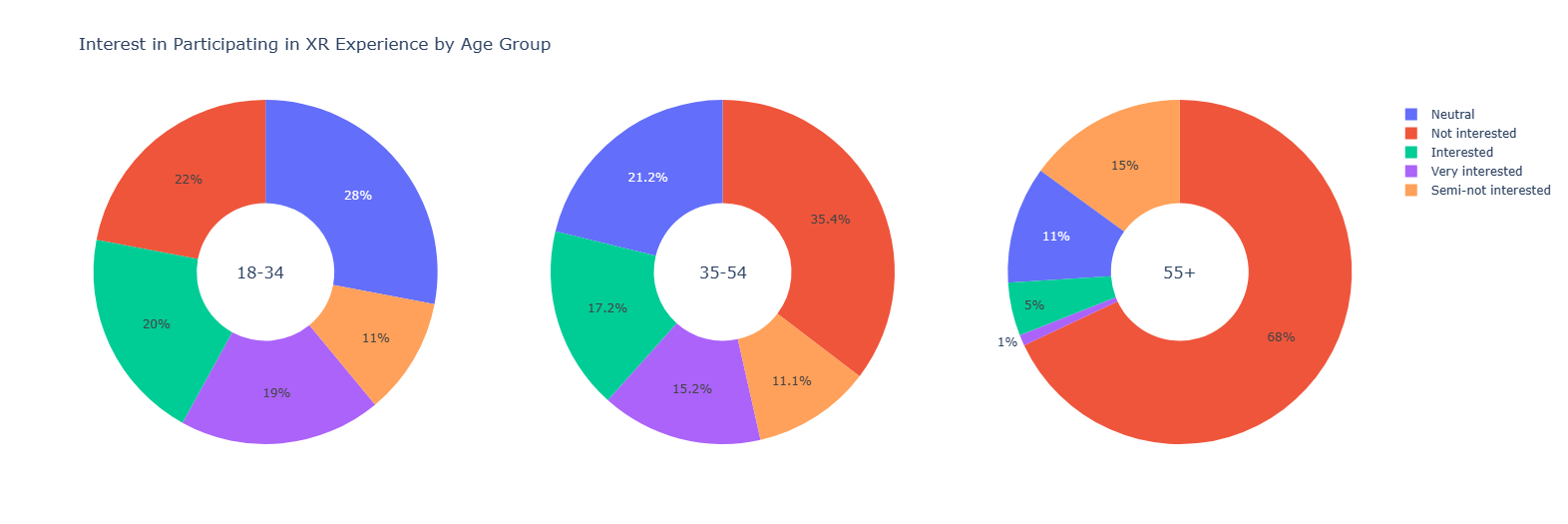
Metaverse Interest by Age
The pie charts above are grouped by age, showing different levels of interest in participating in a metaverse experience. The metaverse, like XR, is an augmented form of reality where humans interact in a computer-generated environment. The insights of the graph show that younger generations are more interested in these computer-generated experiences. Although this data set is only from adults, we can infer that children would be even more interested in the experience than 18-34 year olds. Likely, these children would increase its popularity amongst their parents' generations as well. 17 year olds and younger are a significant portion of movie-goers, relying on their parents' wallets to access the theater experience. By engaging with the generations that are more interested in metaverse experiences (younger generations), movie theaters could simultaneously catch the attention of older generations.
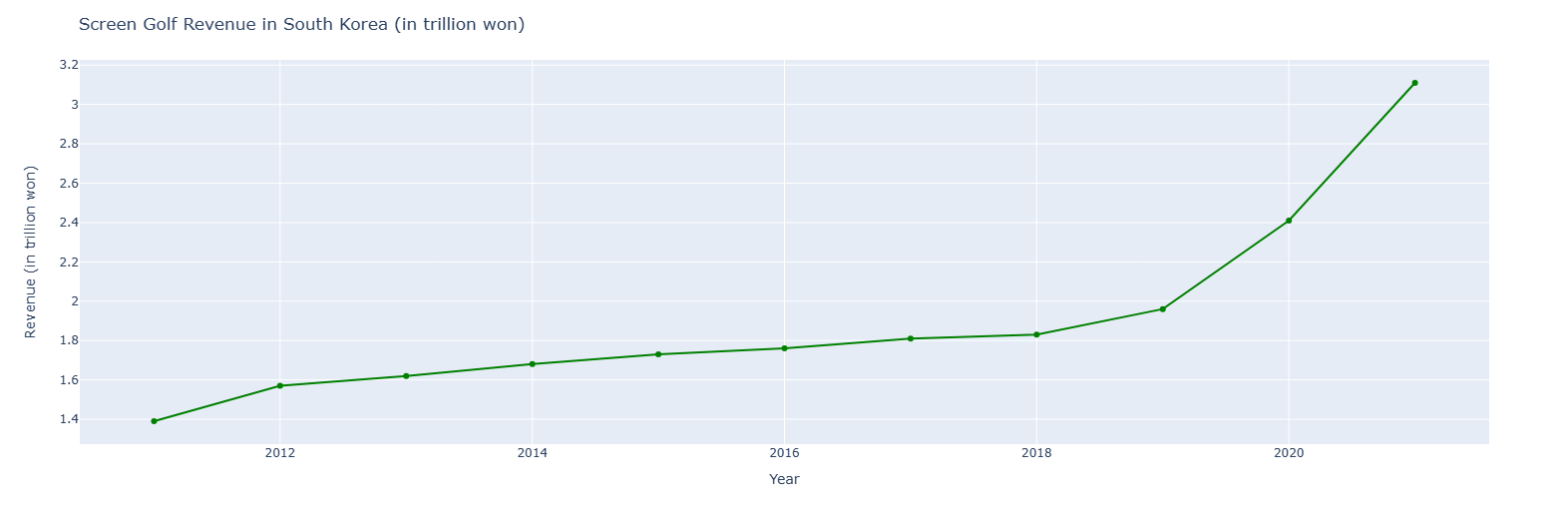
Screen Sports
Screen sports are a popular form of virtual reality entertainment in other countries, such as the huge spike in popularity of screen golf in South Korea. The line graph above shows this rise in popularity in South Korea based on revenue (in tillion won, the currency of South Korea). The video to the left shows people playing screen golf. By incorporating XR games, such as screen sports, in movie theaters, the theater experience becomes one of full immersion in another reality. Coin games and arcades no longer add to the fun of going to the theater. XR games will enhance the experience, making it a one-of-a-kind adventure that reclaims the magic of in-person theaters over at-home video streaming.
Click here to watch the video